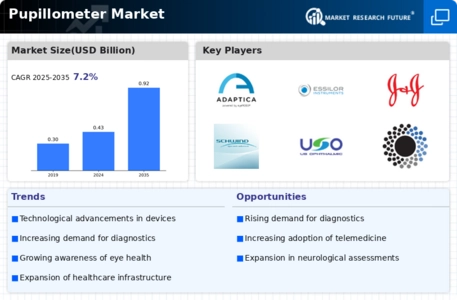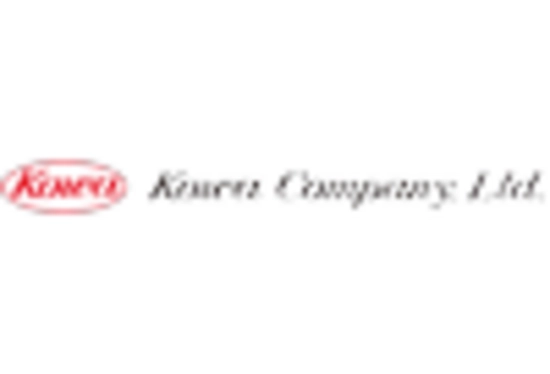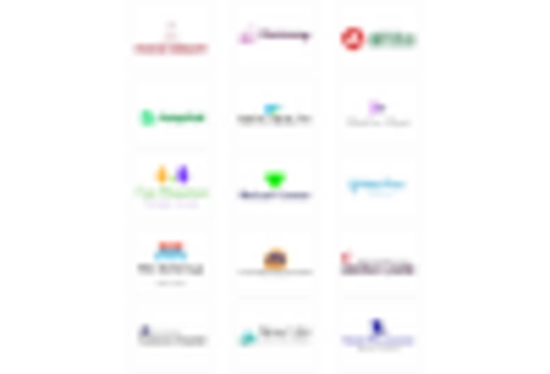Market Trends
Key Emerging Trends in the Pupillometer Market
The Pupillometer Market is experiencing noteworthy trends, reflecting advancements in ophthalmic diagnostics, neurological assessments, and the integration of technology in medical devices. Pupillometers are devices used to measure and analyze pupil size and reactivity, playing a crucial role in various medical fields, including ophthalmology, neurology, and critical care. Over recent years, several key trends have shaped the Pupillometer Market, emphasizing the importance of objective pupil assessments, the rise of handheld devices, and the incorporation of artificial intelligence (AI) for enhanced diagnostics.
One significant trend in the Pupillometer Market is the increasing adoption of objective and quantitative pupil assessments. Traditional manual methods for evaluating pupil size and reactivity are subjective and may vary among different observers. Objective pupillometers provide accurate and consistent measurements, reducing variability and improving the reliability of pupil assessments. This trend aligns with the broader movement towards precision medicine and the demand for objective diagnostic tools that enhance the quality of patient care and streamline clinical decision-making processes.
Technological advancements in pupillometry are driving innovation in the market. The development of handheld and portable pupillometers offers greater flexibility and convenience in various healthcare settings. Handheld devices allow for quick and easy pupil assessments at the bedside, in outpatient clinics, or even in emergency situations. The portability of pupillometers enhances their utility in diverse medical disciplines, including neurology, critical care, and general medicine, contributing to the expanding scope of the Pupillometer Market.
Furthermore, the Pupillometer Market is witnessing a trend towards the integration of AI and advanced analytics for more comprehensive pupil assessments. AI algorithms are being employed to analyze pupillary responses and identify subtle changes that may be indicative of underlying neurological or ophthalmic conditions. The combination of AI-driven analytics with pupillometry enhances diagnostic capabilities, enabling healthcare professionals to detect abnormalities and make informed clinical decisions more efficiently.
The market is also experiencing increased adoption of pupillometry in various medical specialties beyond traditional ophthalmology and neurology. Pupillometers are being utilized in critical care settings to monitor neurological function in patients with traumatic brain injuries, cardiac arrest, or other conditions affecting the central nervous system. The versatility of pupillometry contributes to its application in different medical scenarios, emphasizing its role as a valuable diagnostic tool across various specialties.
Moreover, the Pupillometer Market is witnessing a growing emphasis on the integration of pupillometry into telemedicine practices. The ability to perform remote pupillary assessments facilitates virtual consultations, allowing healthcare providers to monitor patients' neurological status from a distance. This trend aligns with the increased adoption of telehealth solutions, providing more accessible and efficient healthcare services, especially in cases where frequent pupil assessments are necessary for ongoing patient management.
Collaborations between pupillometer manufacturers, healthcare institutions, and research organizations are driving research and development efforts in the Pupillometer Market. These collaborations foster the development of innovative pupillometry technologies, including enhanced imaging capabilities, real-time data analytics, and user-friendly interfaces. The synergy between industry stakeholders and healthcare providers contributes to the continuous improvement and customization of pupillometers to meet the evolving needs of different medical specialties.
Despite these positive trends, challenges persist in the Pupillometer Market, including standardization of measurement protocols, regulatory considerations, and the need for widespread education on the utility of pupillometry in various medical fields. Efforts to address these challenges involve collaborative initiatives to establish guidelines, ongoing research to validate pupillometry as a reliable diagnostic tool, and educational programs to enhance awareness among healthcare professionals.

















Leave a Comment